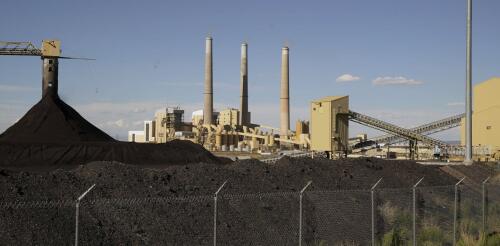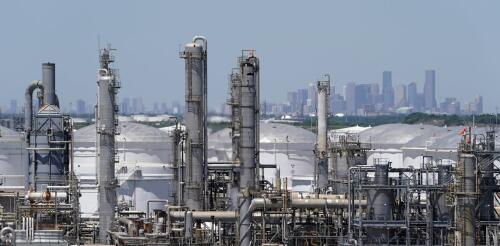Air pollution
Dozens of wildfires are burning across Canada in May 2024 and sending unhealthy smoke blowing into the northern U.S. again. At the same time, the southeastern U.S. is getting smoke from Mexico, where drought conditions have been fueling fires. Last year, Canada’s record 2023 wildfire season introduced millions of Americans across the Midwest and northeastern states to the health hazards of wildfire smoke, with air quality alerts that reached levels never seen there before. Professional baseball games were postponed and the skies in New York City turned orange with haze, at times exposing millions of people to the worst air quality in the world. In some regions, the smoke hung on for days. The pressing question on many people’s minds: “Is this the new normal?” From our perspective as air quality scientists, we think the answer is likely “yes.” Global warming means more fires Hotter, drier conditions, coupled with dry grasses and underbrush...
Electric power generation in the U.S. is shifting rapidly away from fossil fuels toward cleaner and lower-carbon sources. State clean energy targets and dramatic declines in the cost of renewable electricity are the most important reasons. But fossil fuel plants still generate 60% of the U.S. electricity supply, producing air, water and land pollutants and greenhouse gases in the process. To reduce these impacts, the Environmental Protection Agency announced a suite of rules on April 25, 2024. They focus mainly on coal plants, the nation’s most-polluting electricity source. As an environmental lawyer who has been in practice since the early 1970s, I believe these curbs on power plant pollution are long overdue. The new rules close loopholes in existing laws that have allowed coal-fired power plants to pollute the nation’s air and water for decades. And they require utilities to drastically slash these plants’ greenhouse gas emissions or close them down. Oppon...
Did you receive a mail-order package this week? Carriers in the U.S. shipped 64 packages for every American in 2022, so it’s quite possible. That commerce reflects the expansion of large-scale retail in recent decades, especially big-box chains like Walmart, Target, Best Buy and Home Depot that sell goods both in stores and online. This has led to the growth of distribution centers that fulfill these orders. While mail-order commerce is convenient, these centers also have harmful impacts, including traffic congestion and air and water pollution. I study environmental history, and I am part of a group of scholars examining the environmental impacts of big-box stores like Walmart, Target, REI and Bass Pro Shops. Sustainability is a hot topic in the retail sector, but my research on the history of Target – the sixth-largest retailer in the U.S. – shows how retail companies have largely escaped the kinds of environmental regulations that affect other sectors such...
The U.S. Environmental Protection Agency released strict new emissions limits on March 20, 2024, for cars built from 2027 through 2032. The final rule for Multi-Pollutant Emissions Standards caps a process that started almost a year earlier, when the Biden administration first proposed groundbreaking regulations that would essentially require automakers to make a substantial pivot toward electrification. The original proposal met significant pushback from carmakers and unions, who argued that the industry needed more time to switch from gas-powered cars to EVs. As a result, while the final target that this rule sets is very similar to the one that was initially proposed, the timetable in the final rule – especially in the earlier years – is relatively relaxed. That means more carbon emissions in the short run. Politics is inevitably an important consideration in regulating major industries. The new rule is projected to cut carbon dioxide emissions from passenger ca...
The U.S. Environmental Protection Agency has announced a new standard for protecting the public from fine particulate air pollution, known as PM2.5 because the particles are smaller than 2.5 millionths of a meter. These minute particles can penetrate deeply into the body and have been linked to many serious illnesses. The new rule sets an annual limit of 9 micrograms per cubic meter of air, down from the previous level of 12 micrograms. States will be required to meet this standard and to take it into consideration when they evaluate applications for permits for new stationary air pollution sources, such as electric power plants, factories and oil refineries. Under the Clean Air Act, the EPA is required to set air pollution standards at levels that protect public health. In the four articles that follow, scholars wrote about the many ways in which exposure to PM2.5 contributes to cardiovascular disease, lung cancer, other illnesses such as dementia, and premature deaths. 1. An...




